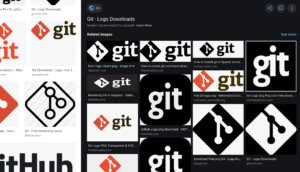Get help with Ubuntu, Mint and Debian Linux Distributions. AGIX staff have the know-how and experience to help your organisation with best-practices, current technology in various Cloud environments including Amazon AWS.
AGIX is a Canonical (Ubuntu) Partner. We study, sell and support Ubuntu Linux.
This page shows examples of our work that AGIX shares freely with you. For a fully supported compute environment, contact our team to find out how we can help your organization move forward in the right way.

Contact our friendly team to get started.
This article demonstrates how to configure Fail2Ban to use a MySQL (or MariaDB, etc) as the storage repository for IP blocking records. This allow multiple Fail2Ban services (running on multiple servers) to report and use a central IP blocking repository. A little context. In this article, we’re installing everything on
Read more
This article describes how to protect your Apache web server by restricting which countries can access it. We’re using Apache on CentOS 7 but Ubuntu instructions are included and are very similar. I’ve given two examples; one on whitelisting everything except what we want to block, and blacklisting everything except
Read more
This article walks you through the process of enforcing 2FA on Ubuntu using the Google Authenticator. All of these steps are completed on the system that you want 2FA to be enforced on. Important notes: * SSH key-based logins bypass the 2FA component of the login verification process. * Users
Read more
This article shows the Ansible playbook used to query target systems to get their version details. Ie, the details obtained from “/etc/*release”. — – hosts: all # remote_user: root # become: yes tasks: – debug: msg: – “ansible_distribution {{ hostvars[inventory_hostname].ansible_distribution }}” – “major version {{ hostvars[inventory_hostname].ansible_distribution_major_version }}” – “version {{
Read more
This article continues from Part 2 – Replica Sets and Scaling. Our objective in this article is to get an application exposed to the wider network on an IP address of the host and a port of our choice. The IP address will be “10.0.0.210” and our port of choice
Read more
This article continues from Part 1 – Installation and configuration. We can create a replica set (replicateset) or “rs” for short, so we can scale an application to meet demand. Create a file on the Kubernetes host called “my-rep-set.yaml” and populate it with the following: Tip: This is just an
Read more
This article walks you through the process of installing the minimal Kubernetes environment on Ubuntu 20.04. Kubernetes comes in two forms; a single node cluster and a multi-node cluster. In this walk through, we’ll be using the single node cluster called MicroK8s. I suggest starting with a Ubuntu 20.04 server
Read more
This article explains how to solve the issue of FreeRADIUS certificates expiring. In this example, we’re using CentOS 7 but the same should work on any Linux provided the paths are the same. The following commend errors due to a certificate expiring. systemctl restart freeradius SO we need to re-generate
Read more
Your Git repo doesn’t need to be on Bitbucket or Github. You can very easily host a repository on your own systems. This article demonstrates this. We’re using CentOS here but any Linux OS should work. You just need the “git” package. As always, we’d love to read your comments.
Read more
This article is focused on generating a CSR file, submitting it to a CA and using the resulting Certificate on Linux with Apache, Nginx and/or IIS on Windows. The Windows related steps continue on from the work required to get the Certificate ready for Linux. In other words, regardless of
Read more







